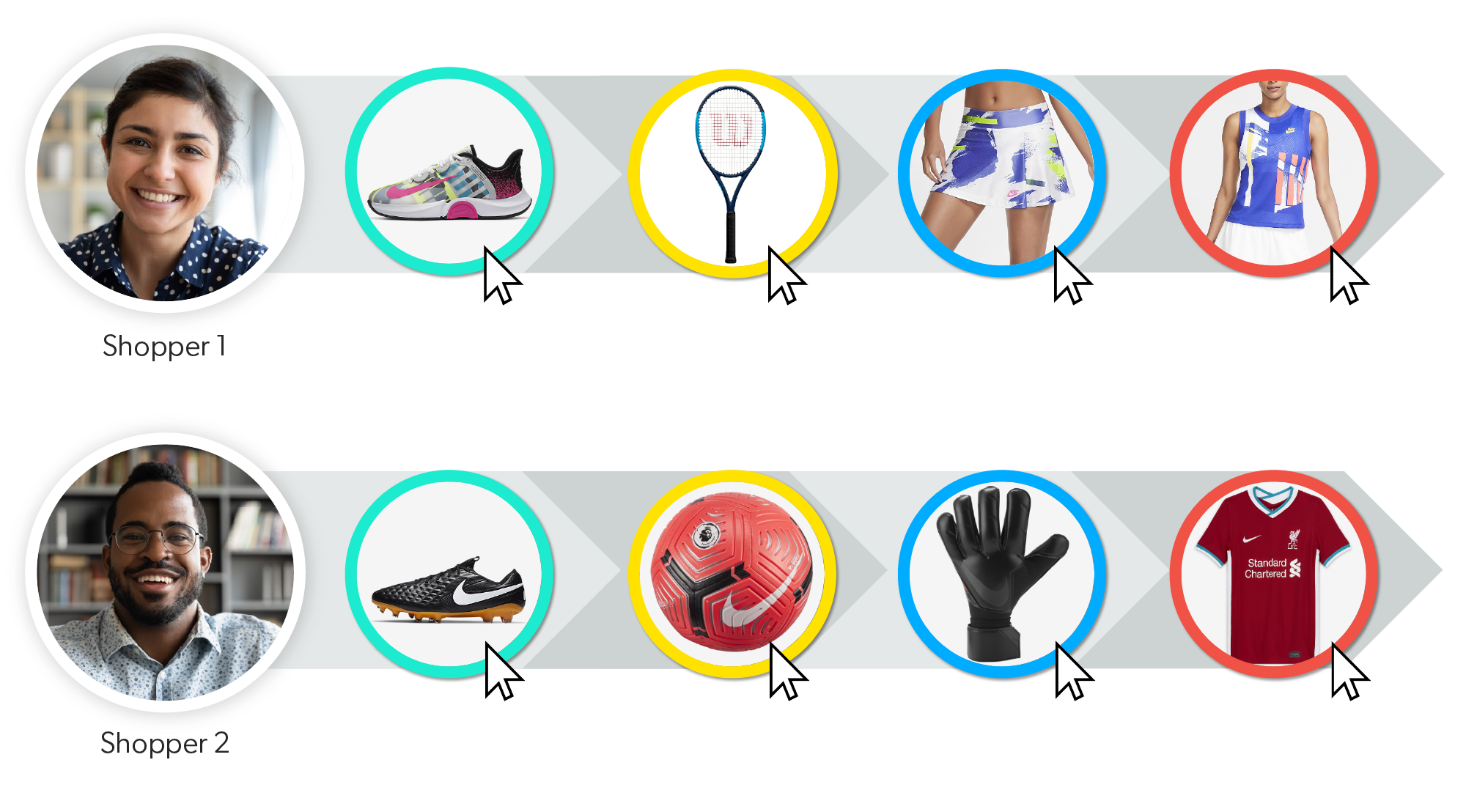You've likely heard the conventional wisdom countless times: “Minimize friction in the checkout process. Reduce the number of steps to boost conversions.” While this advice holds merit in many situations, my extensive experience leading a top-performing marketing agency has taught me that strategically adding checkout steps can often lead to remarkable improvements in both conversion rates and customer lifetime value (LTV).
In this post, I'll dive into the nuanced psychological tactics and advanced checkout flow techniques that have enabled my agency to achieve outstanding results for our clients. Prepare to challenge your assumptions and discover a powerful new perspective on checkout optimization.

Why More Steps Can Mean More Conversions
One of our e-commerce clients, a premium skincare brand, was struggling with a high cart abandonment rate. The conventional solution would be to streamline their checkout process, eliminating any unnecessary fields or pages. Instead, we took a counterintuitive approach and added a step to their checkout flow.
| Checkout Step | Completion Rate | Abandonment Rate | Time Spent (Avg.) |
|---|---|---|---|
| Product Page | 100% | 0% | 1 min 45 sec |
| Cart Page | 85% | 15% | 45 sec |
| "Peace of Mind" | 92% | 8% | 30 sec |
| Payment Info | 80% | 20% | 1 min 15 sec |
| Order Confirmation | 98% | 2% | 10 sec |
After conducting in-depth user research, we discovered that many potential customers abandoned their carts due to concerns about the company's return policy and product guarantees. To address this, we added a dedicated “Peace of Mind” step just before the final order confirmation. This page featured clear, concise information about the brand's 60-day money-back guarantee, free return shipping, and commitment to customer satisfaction.
The results were astounding. By proactively addressing common objections and providing reassurance at a critical moment, we saw the cart abandonment rate decrease by 18% and the overall conversion rate increase by 12%. This subtle change not only boosted immediate sales but also contributed to higher customer LTV, as buyers felt more confident in their purchase decisions and developed greater trust in the brand.

The Power of Strategic Micro-Commitments
Another client, an online retailer specializing in high-end home decor, faced a unique challenge. Their target audience was passionate about interior design but often hesitated to make significant purchases without professional guidance. To overcome this hurdle, we implemented a series of strategic micro-commitments throughout the checkout process.
| Micro-Commitment | Email Engagement | Social Media Engagement | On-Site Engagement |
|---|---|---|---|
| Style Quiz | 35% CTR | 10% Participation | 75% Completion |
| Delivery Date Selection | 28% CTR | N/A | 90% Completion |
| Consultation Booking | 15% CTR | 5% Booking Rate | 18% Booking Rate |
| Loyalty Program Opt-In | 40% CTR | 20% Opt-In Rate | 30% Opt-In Rate |
Instead of immediately presenting users with a complex product configuration tool, we added a simple, interactive questionnaire before the main checkout flow. This quiz asked customers about their design preferences, room dimensions, and budget, providing a low-pressure way for them to engage with the brand and receive personalized recommendations.
As customers progressed through the checkout process, we introduced additional micro-commitments, such as selecting a preferred delivery date, opting into a design consultation, or signing up for exclusive style guides. Each step was carefully crafted to provide value to the customer while gently guiding them towards the final purchase.
The impact of these strategic micro-commitments was significant:
| Metric | Before | After |
|---|---|---|
| Conversion Rate | 2.3% | 4.1% |
| Average Order Value | $850 | $1,150 |
| Customer LTV (12 months) | $1,200 | $1,800 |
By designing a checkout flow that prioritized customer engagement and gradually built commitment, we not only increased immediate conversions but also fostered lasting relationships with high-value customers.

Leveraging Social Proof and Scarcity
For a client in the competitive world of online fashion retail, we employed a combination of social proof and scarcity tactics to optimize their checkout process. Rather than reducing the number of steps, we strategically added elements that tapped into powerful psychological principles.
| Product Category | Conversion Rate Lift (Low Stock) | Revenue Per Visitor Increase (Low Stock) |
|---|---|---|
| Dresses | +15% | +25% |
| Shoes | +10% | +18% |
| Accessories | +8% | +12% |
| Outerwear | +20% | +35% |
On the product page, we prominently displayed reviews and ratings from verified buyers, providing potential customers with valuable social proof. As users progressed to the cart page, we introduced a dynamic “Recently Sold” counter, creating a sense of popularity and scarcity.
During the checkout process, we added a step that prompted users to select their desired size and color. Alongside each option, we displayed real-time inventory data, highlighting low-stock items and creating a sense of urgency. For particularly popular items, we even included a subtle “Only X left in your size” message.
These strategic additions to the checkout flow had a profound impact:
- The presence of social proof elements increased conversion rates by 15%
- The scarcity tactics led to a 20% uplift in average order value
- The combination of social proof and scarcity contributed to a 25% increase in repeat purchases over the following 6 months
By carefully integrating these psychological triggers into the checkout process, we not only boosted immediate conversions but also encouraged customers to act quickly and return for future purchases, ultimately driving higher LTV.

The Art of Checkout Optimization
As these examples demonstrate, the key to successful checkout optimization lies not in blindly reducing friction but in strategically adding steps that enhance the customer experience and address their unique needs and concerns.
To master this art, consider the following key principles:
Understand your audience
Conduct thorough user research to identify the specific objections, preferences, and motivations that shape your customers' buying behavior.
Provide value at every step
Ensure that each additional element in your checkout flow offers tangible value to the customer, whether it's reassurance, personalized recommendations, or social proof.
Leverage psychological triggers
Employ principles like scarcity, urgency, and commitment to gently guide users towards the final purchase.
Test and refine
Continuously monitor your checkout flow's performance, using A/B testing and user feedback to identify areas for improvement and optimization.
By adopting this seemingly counterintuitive approach to checkout optimization, you can craft experiences that not only boost immediate conversions but also foster long-term customer relationships and drive higher LTV. Challenge the conventional wisdom and unlock the hidden potential of your checkout process – your bottom line will thank you.
FAQ
- What is checkout optimization, and why is it important for ecommerce businesses?
A: Checkout optimization is the process of improving the checkout experience to increase conversions and customer lifetime value (LTV). It's crucial for ecommerce businesses because even small improvements in the checkout process can lead to significant gains in revenue and customer loyalty. - How can adding more steps to the checkout process improve conversions?
A: Adding strategic steps to the checkout process, such as a “Peace of Mind” page or micro-commitments, can address customer concerns, provide reassurance, and build trust. By proactively addressing objections and fostering engagement, these additional steps can counterintuitively boost conversions. - What are micro-commitments, and how do they work in the checkout process?
A: Micro-commitments are small, low-pressure engagements that guide customers towards a final purchase. Examples include interactive quizzes, personalized recommendations, and opt-ins for exclusive content. By gradually building commitment and providing value at each step, micro-commitments can significantly increase conversion rates and customer LTV. - How can social proof and scarcity tactics be used in the checkout process?
A: Social proof elements, such as customer reviews and ratings, can be prominently displayed to build trust and credibility. Scarcity tactics, like real-time inventory updates and “recently sold” counters, create a sense of urgency and encourage customers to complete their purchases quickly. - What are some key principles to keep in mind when optimizing the checkout process?
A: The key principles of checkout optimization include understanding your audience, providing value at every step, leveraging psychological triggers, and continuously testing and refining your approach. By focusing on these principles, you can create checkout experiences that resonate with your customers and drive long-term success. - How can I identify opportunities for improving my checkout process?
A: Start by conducting thorough user research to gain insights into your customers' preferences, objections, and motivations. Analyze your checkout flow to identify potential friction points or areas where you can add value. Monitor key metrics like cart abandonment rates and conversion rates to pinpoint areas for improvement. - What tools can I use to test and optimize my checkout process?
A: There are various tools available for testing and optimizing your checkout process, such as A/B testing platforms, heat mapping software, and user feedback tools. Google Optimize, Hotjar, and Qualaroo are popular options that can help you gather data and insights to inform your optimization efforts. - How often should I review and update my checkout process?
A: Checkout optimization should be an ongoing process. Regularly review your data, perform A/B tests, and gather customer feedback to identify new opportunities for improvement. As your business grows and evolves, your checkout process should adapt to meet the changing needs and preferences of your customers. - Can these checkout optimization strategies work for any ecommerce business?
A: While the specific tactics may vary depending on your industry, target audience, and unique selling proposition, the fundamental principles of checkout optimization are applicable to any ecommerce business. By understanding your customers and providing value throughout the checkout process, you can create experiences that drive conversions and foster long-term loyalty. - How can I measure the success of my checkout optimization efforts?
A: Track key performance indicators (KPIs) such as conversion rates, average order value, cart abandonment rates, and customer lifetime value. Use A/B testing to compare the performance of different checkout variations and measure the impact of your optimizations. Regularly review your data and adjust your strategy based on the insights gained.



